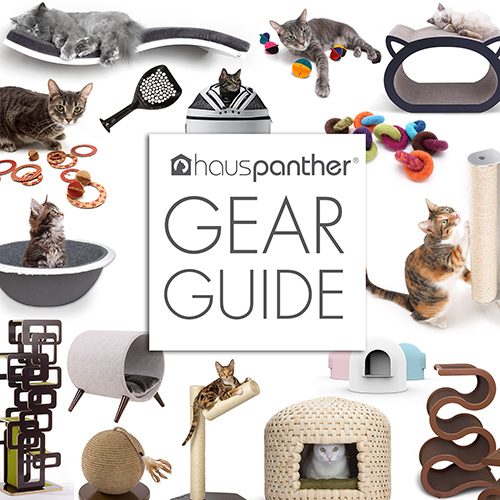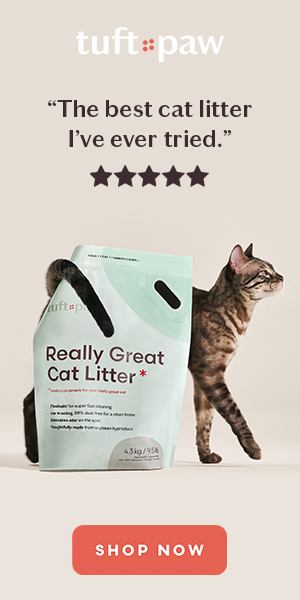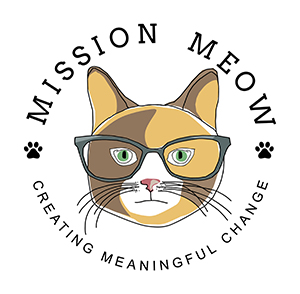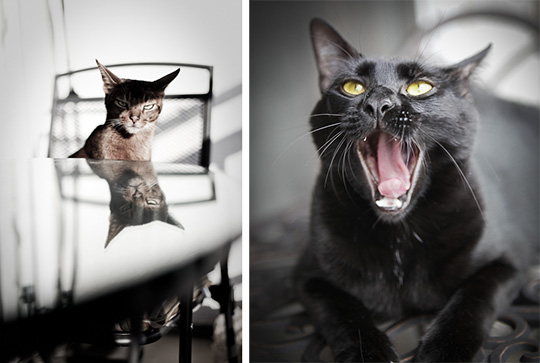
These stunning photos are from Los Angeles-based photographer Susan Weingartner. Here, she shares a few stories and tips about photographing feline subjects, as well as some recent photos she took of Jackson Galaxy and his feline family members.
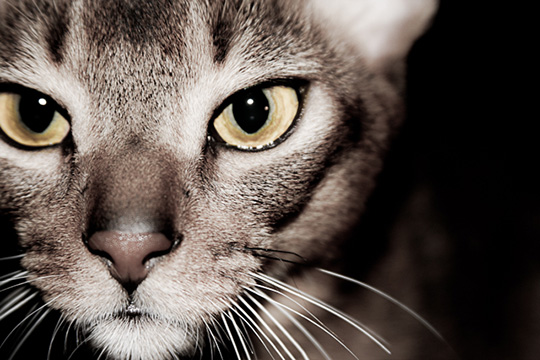
How long have you been photographing pets and how did you get started?
From a very early age, I’ve had a deep and profound connection to animals. As a child, I rescued many stray cats, dogs, birds, and other animals. As an adult, I became an advocate for the rights of animals, and work with a number of non-profits to help them. I’ve been shooting for over 10 years, but it wasn’t until about two years ago that the light bulb finally appeared over my head, and I realized that I wanted to combine my two greatest passions – photography and animals. So, I created a business shooting companion animal portraiture and nature photography.
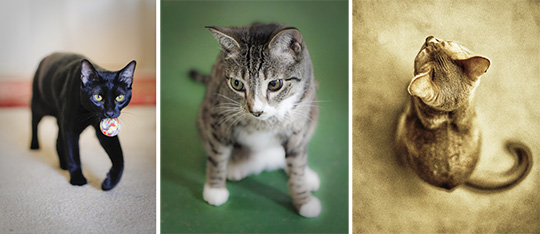
I also donate my photography services to a number of non-profit organizations, including Stray Cat Alliance, Beagle Freedom Project and Mercy for Animals – all based near me in Los Angeles. I believe that a good photo can possibly save an animal’s life while they are waiting for adoption, so I’m looking to expand on this work in the future. I recently did a shoot with Beagle Freedom Project that involved a one-year-old mother beagle and her 5 puppies being rescued from a laboratory. We did some fantastic shots of momma and babies, posted them on Facebook, and the response was so overwhelming we decided to sell cards and prints online, with a portion of the proceeds going to Beagle Freedom Project. The cards are available at zazzle.com/susanweingartner and the prints can be found at susanweingartner.imagekind.com. It feels so good when I’m able to create new ways to help animals using my photography. I’m always looking at, and presenting new ideas to the organizations that I work with, in order to help them further their goals with my photography.
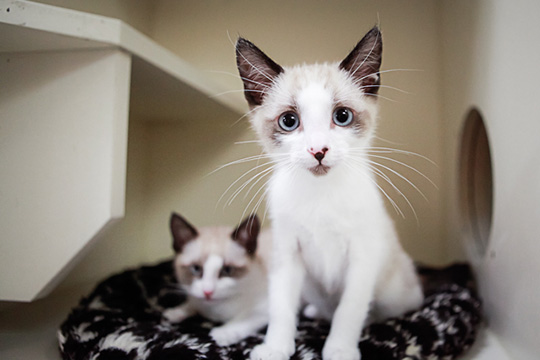
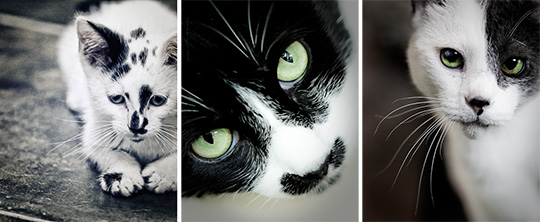
What kind of pet photography do you do? Do you have a specialty?
I love shooting with every kind of animal, including farmed and wild ones! I have a new site dedicated to just my animal photography AnimalsAndTheirHumans.com, that I’m really proud of.
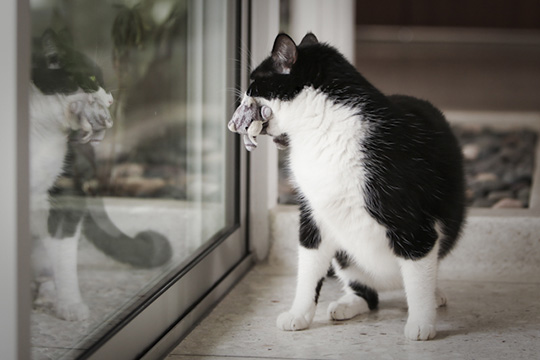
Cats are especially interesting to me because they do require a very subtle connection that isn’t easy for everyone. Cats really require you to come to them and discover their needs. I love their mystery. I find it can take longer to finish a shoot with cats, but I love every moment of working with such amazing, graceful beings. To me, there’s nothing better than sitting on the floor for hours, connecting with cats, and getting great shots.
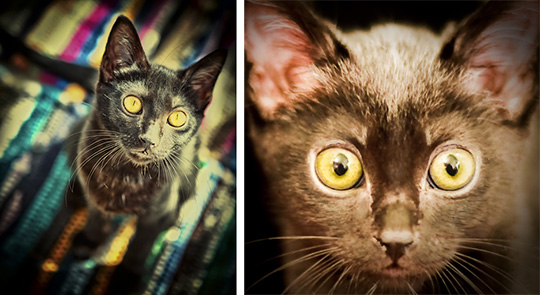
Sometimes I find when I come in for a shoot that the cat parents want to try to get their cats to do all the cute things they do for them when I’m not there. This rarely works, since the cat doesn’t know me yet. I find the best thing is to let the humans play for a bit, get some nice animal/human shots, and then ask if I can have some quiet time connecting to their kitty. That’s when the magic can really happen. Not to say I haven’t gotten some adorable shots thanks to Cat Moms and Dads, but the really deep and profound shots come when I sit with them and allow them to show me who they are. Human ego and animal ego are very different, and my mission is to show the animal soul, so it’s important for me to be able to be there without the other humans around, at some point in the shoot. Although, I did work with Jackson Galaxy and his animal family recently, and needless to say, I didn’t ask him to leave. We got some amazing shots!
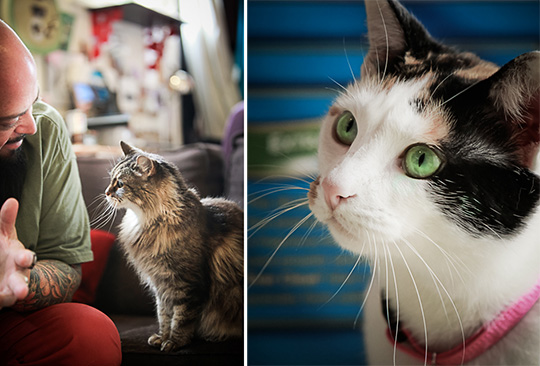
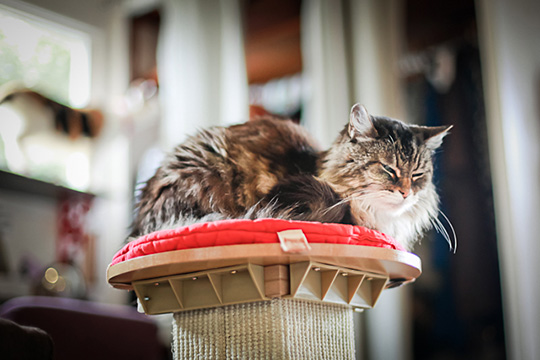
Do you do anything special to prepare for a photo shoot with a cat?
I usually meditate, or do other activities that help me center myself. Cats are such sensitive beings, and can feel everything that’s going on with you. I like to make sure I’m in a calm and peaceful state, in order to help reduce their stress, since I’m coming into their territory and need to tune into them. I do believe that the only way to work with animals is in their most comfortable surroundings, which of course is their home, with all its familiar sights and sounds. I believe that bringing an animal to a photography studio is not going to be a pleasant experience for them and won’t bring the best results. So I always come to the home of that animal, or a favorite place like a dog park, to do my shooting. Depending on light sources there, I’ll bring extra lighting – flash, strobes, and reflectors, to be used only if necessary. 99% of the shoot is about finding some good natural light where the animal is comfortable, and then if it’s not presenting itself, pull out the minimal lighting necessary to help with the shoot.
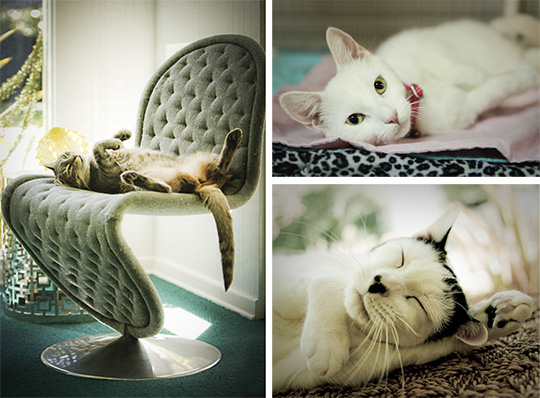
When I work with animals who are waiting to be adopted, that situation can be more stressful for the animal, depending on where they are being boarded. I tend to take a lot of time letting the animals get as comfortable as possible before I shoot. I want to help them find their forever home and I understand it is a great responsibility to show them in their best light. I’ve seen some really horrible shots on adoption sites, which are doing nothing to help an animal find a home, and this is something I’ll continue to work on, along with other photographers who care about this issue. Whether it’s getting pros to take the shots, or teaching staff how to do it better, this is so important in helping homeless animals get adopted.
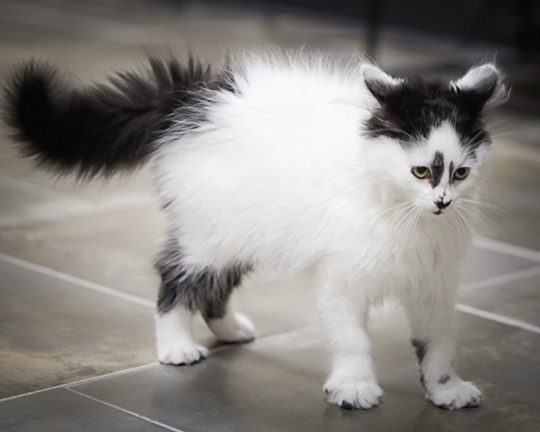
What was the most challenging cat photo shoot you have done? Any funny stories?
I was hired for a job with a wonderful client who has a gorgeous home and 11 cats, plus she had 4 rescued kittens at that time that she asked me to shoot as well, in order to help them get adopted. I don’t know if I can actually say it was “challenging” because I loved working with these cats so much, and they were all so beautiful, but it was a longer shoot — finding all the cats in their various comfort zones in her home, and helping them to be comfortable with me and my ‘big black clicking box thingy’. They had wonderful natural light in almost every room, which made the job so much easier! I suppose the most challenging thing was trying to remember so many names and match them to the shots later…
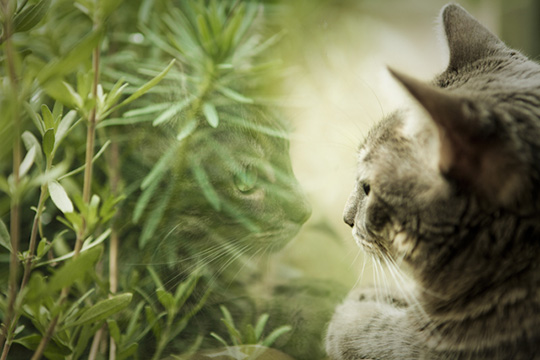
Working with all animals can be challenging, because you can’t give them direction the way you can with humans. But, that challenge is what drives me. I understand that, because I can’t give direction, I have the opportunity to capture the pure essence of that animal, and it’s magical when you can see that in the photo.
Working with rescued calves, for Mercy For Animals, was an interesting challenge. They had been in the sanctuary for about a month or so, and had grown considerably larger since our first shoot. I had to go into the pen in order to get clean shots of them. The problem was, they were extremely playful in spite of their growing bodies, and not only was it hard to get a good shot without too much movement, they would also run straight towards me — which was a great shot, but could also cause considerable harm to my body. I somehow found a way to position myself, get a couple of shots, and then run sideways. I walked away with no major bumps or bruises, and I loved every minute of it!
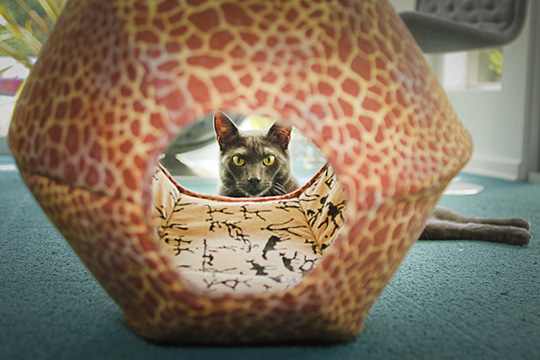
Do you have any tips for readers about how to take great photos of their cats?
Always think of your cat’s needs first. I never try to “make” them do anything. Sit with them and let them be who they are. Natural light is almost always the best, but if you don’t have a great light source, a little flash can help. Too much flash can harm. Faster shutter speed is important, unless you want to show movement. The more you shoot, the better the shots will get. But, if you really want amazing shots of your cats, consider hiring a professional photographer like me, to at least get those portraits you may not be able to get with your particular camera equipment. Pro photographers have the experience, the eye, the equipment, and the know-how to capture moments in a way you may not have had the time to develop. Those will be the shots that you will always cherish because of the richness of that moment that was captured.
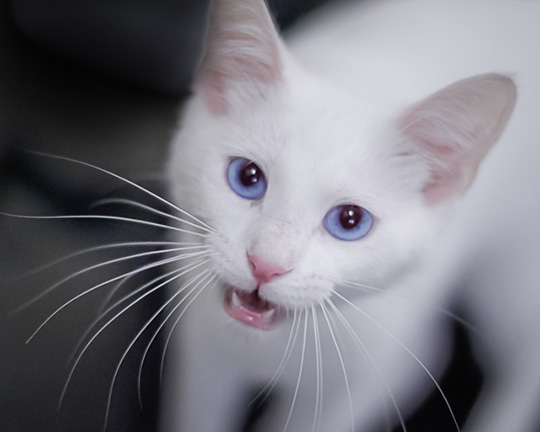
For the more technically inclined readers, can you please tell us what equipment you use? (camera, lens, lighting, filters, etc.)
I shoot with two Canon 5D MarkII’s, and have an older 5D as a backup camera. I like working with two cameras so I have lens options ready to go. I rarely use my 580EXII flash, but have it handy when I need to fill the light a bit. I usually keep my Travelite strobes in the car in case there isn’t a good natural light source, but haven’t really needed them in most cases. I have a number of lenses, depending on the situation. I love the 24-70mm 2.8, and sometimes the 70-200 2.8 when I need to stay further away if the animal is feeling nervous still. That lens is great when I’m shooting with feral cats. I also bring along my 50mm 1.4 and 85mm 1.8 for a really beautiful, shallow depth of field. When shooting wild animals, and with some farmed animals, I have a great 100-400mm zoom lens that has helped me capture some really special moments. I use several different editing software techniques/combinations to create a more surreal feeling in a lot of my photos. I’m in the process of trying out some new styles, which I’m feeling very excited about, and looking forward to sharing in the future!

